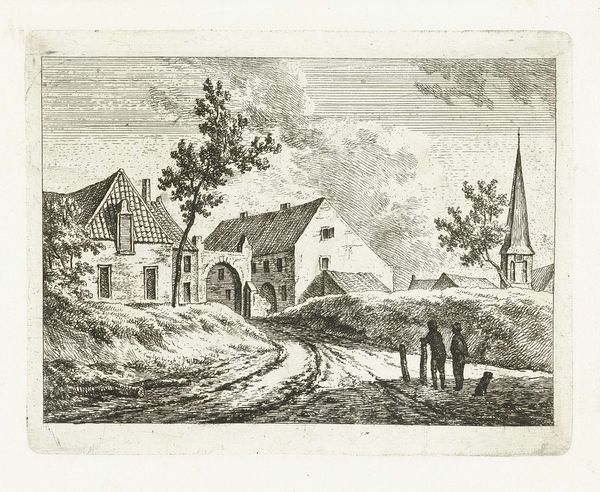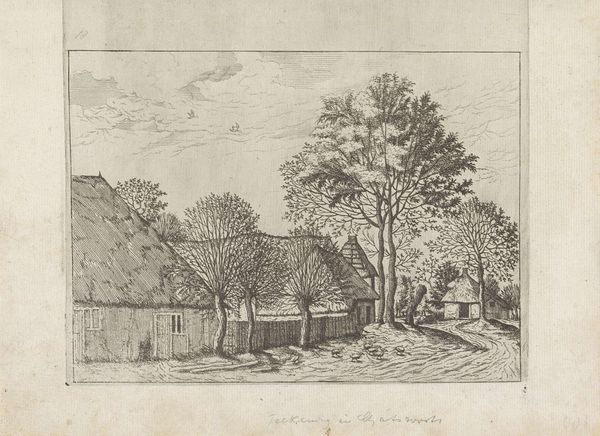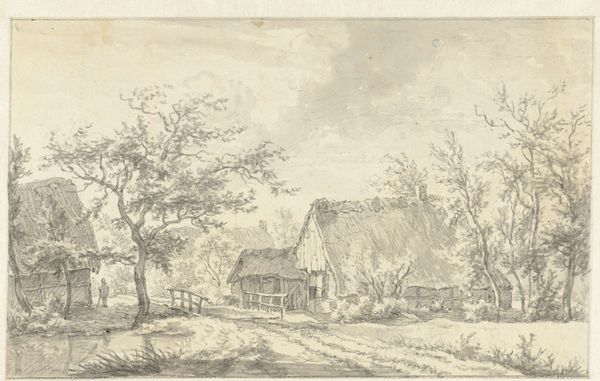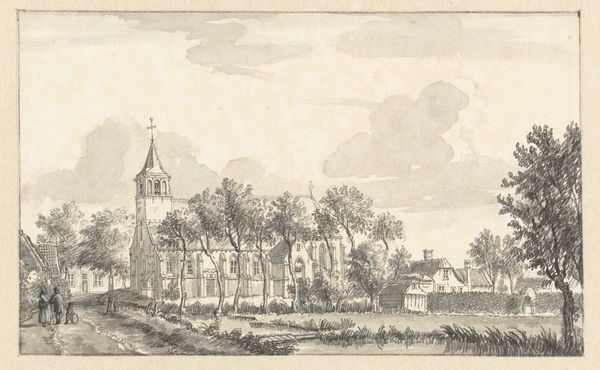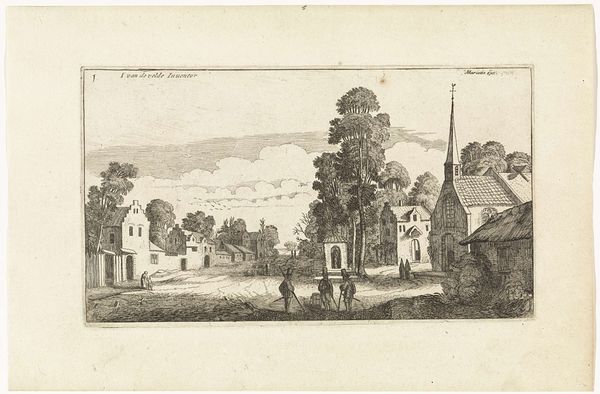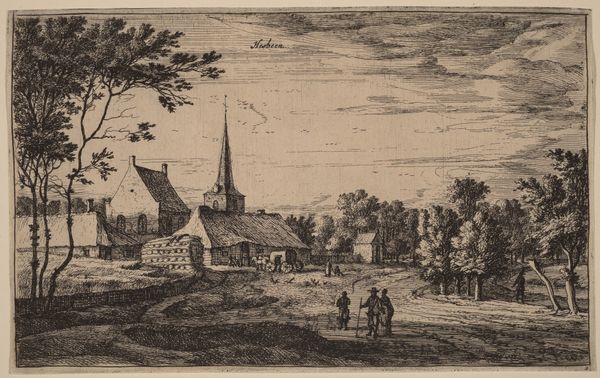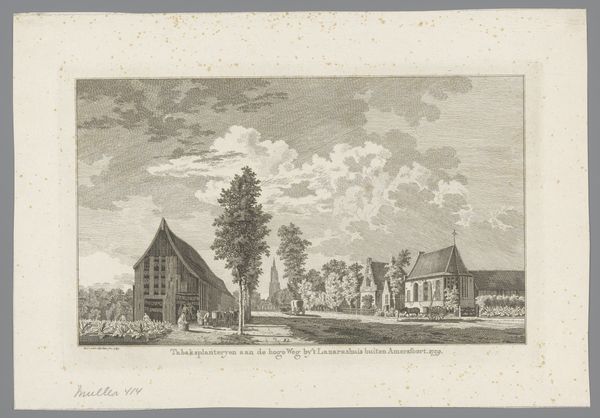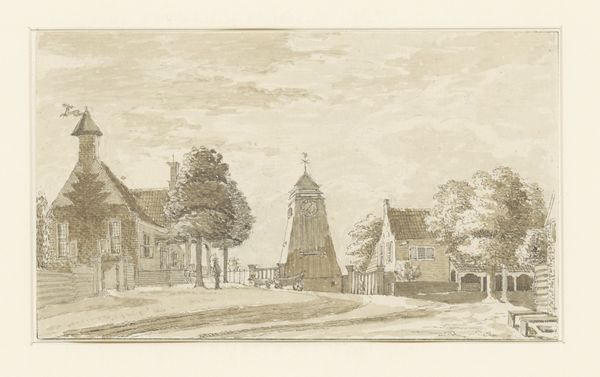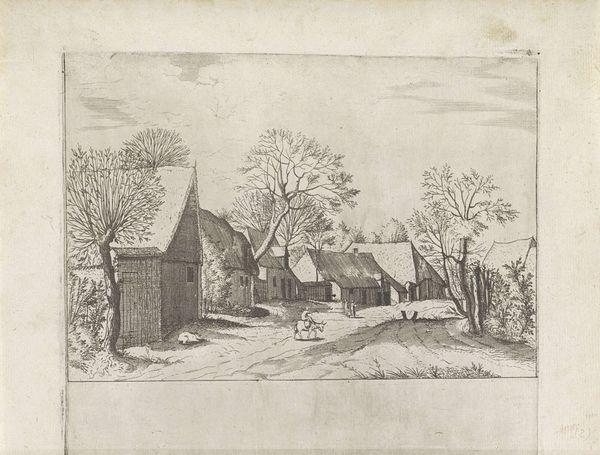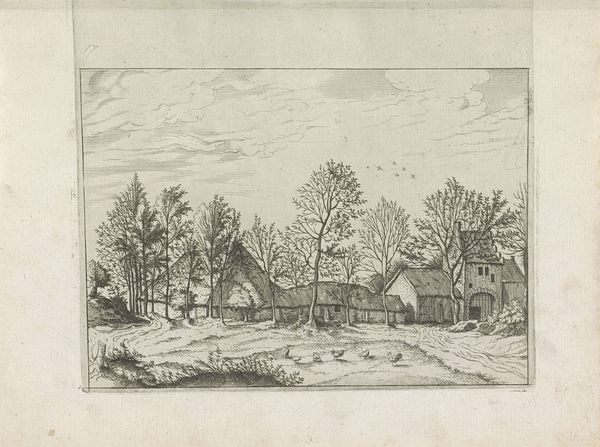
print, etching
# print
#
etching
#
pencil sketch
#
landscape
#
etching
#
sketchwork
#
line
#
realism
Dimensions: height 75 mm, width 135 mm
Copyright: Rijks Museum: Open Domain
Editor: Here we have "Huis op een veld bij een dorp," or "House in a field near a village," an etching by Gijsbertus Johannes Verspuy, made sometime between 1833 and 1862. It's currently housed here at the Rijksmuseum. The delicate linework gives it a quiet, almost dreamlike quality. What strikes you about it? Curator: What I see here is a tapestry woven from collective memory. Etchings like these were more than just pictures; they were visual anchors, rooting people to their sense of place. What symbols do you recognize that speak to that? Editor: Well, there's the church steeple rising above the trees, certainly a powerful symbol. And the houses, though simple, look lived in. They suggest community. Curator: Exactly. Consider how the steeple visually dominates, a constant, reassuring presence. And houses, more than shelters, embody hearth and home. The technique—etching— itself echoes this. The lines, reminiscent of architectural blueprints and precise maps. It shows, with that perspective in mind, that the artist intended to emphasize and represent this land within reality. Editor: So, it’s not just a picture of a place, but a statement about the importance of home and community? Curator: Precisely. Look closely—doesn't it remind you of other rural landscapes? Even the style speaks to our desire to visually memorialize locations. Editor: Now that you point it out, I do see similar architectural images in my history books. This makes me think about cultural roots of architectural development. Curator: Consider then that we interpret the world through inherited lenses, with our perspective filtered by our own understanding of cultural background. Thank you for this insightful reflection.
Comments
No comments
Be the first to comment and join the conversation on the ultimate creative platform.
